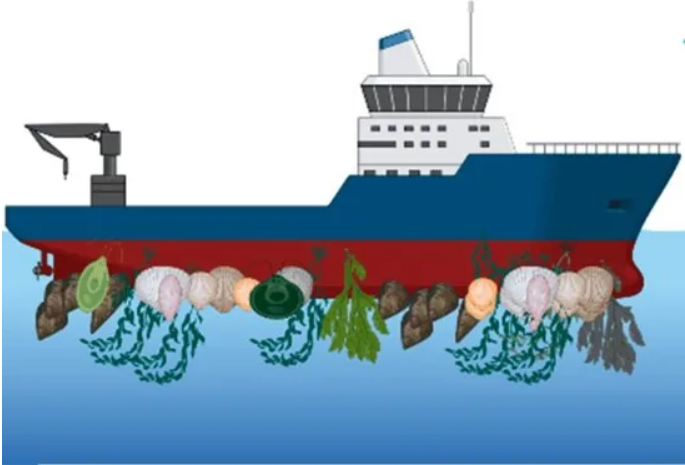Biofouling

Biofouling is the buildup of unwanted plants, algae, or small animals (like barnacles, mussels, or bacteria) on wet surfaces, especially on ships, boats, and underwater structures.
How Does It Happen?
Ships take in ballast water (for stability) from one region and release it in another, carrying tiny organisms.
Marine creatures attach to ship hulls, pipes, or docks, forming sticky layers over time.
Why Is It a Problem?
Invasive Species Spread: Organisms hitchhike to new areas, harming local ecosystems (e.g., Asian paddle crab reaching New Zealand).
Economic Costs: Cleaning ship hulls is expensive; clogged pipes reduce efficiency.
Environmental Damage: Non-native species outcompete local marine life.
Example:
Zebra mussels from Europe stuck to ships and invaded U.S. lakes, damaging pipes and native species.
Solution: Anti-fouling paints and better cleaning methods help, but stricter biosecurity checks are needed to stop invasions.
